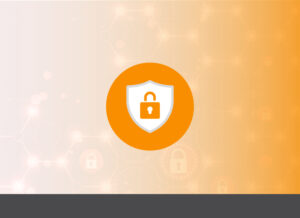The past year has accelerated a digital transformation in higher education with the pandemic forcing a move to remote work and online learning while leveraging modern cloud infrastructure. As the future of education becomes increasingly digital, having a secure, reliable data platform that helps deliver better services and streamline business processes with increased transparency is imperative for all education stakeholders. Two case studies illustrate how different universities make use of data platforms, analytics, and dashboards.
University of Texas at Austin
Nearly every decision at the University of Texas in Austin is based on the data that is available to them. So everyone needs the right information to make the decisions at any given time—and they need it in easy-to-understand dashboards. The university has an arsenal of dashboards that they have developed for use by specific groups, reducing the number of data requests that IT staff receive.
When the pandemic hit, the university wanted to disseminate information as diligently and quickly as possible. One dashboard provided information on positive COVID tests and another on the number of vaccinations administered. They are updated every day, so every university department can make adjustments as necessary.
The University has a survey group that sent quick, easy surveys to students, faculty, and staff that provide key metrics for decisions about class structures and social distancing measures. Since the school has limited campus space, they are using the information to consider whether to offer large classes online after the pandemic.
 Faculty Retention
Faculty Retention
UT Austin also uses analytics to recruit and retain top-performing faculty, which is key to long-term success. The university recognizes faculty by nominating them for prestigious awards. However, most universities have a perception-driven nomination process, which is not necessarily equitable.
The university initiated a data-driven approach to evaluate who should be nominated based on merit—and who has the best chance of getting those awards. They built a custom dashboard, which has filters for department, gender, race, ethnicity, academic rank, etc. It also includes indices for scholarly research and faculty productivity. Plotted on a graph, the analytics revealed faculty members who were actually quite productive but had not been nominated for awards. Recognizing the value of data driven decisions, the school used that data as a starting point for conversations about award nominating committees.
New York University
Since New York City was hit hard early on in the pandemic, NYU was required to take fast action. A big, complex organization like a university can easily slip into siloed operations. To avoid siloes and improve decision-making, the university built dashboards to help senior leadership identify and quickly address the new issues they faced.
Having trustworthy data services has proven to be the foundation for their success. Previous investments in providing usable data services paid off when they entered crisis mode. They leveraged this foundation to allow consistency and transparency across the school. As a result, NYU stayed open throughout the crisis, even during the peak. Their positive rate of infection stayed consistently lower compared to New York City. The school’s administrators remained connected throughout to make critical strategic and operational decisions in a collaborative manner. Technology played a vital role to help achieve those goals.
Providing Vital Analytics
NYU needed two streams of data for different audiences. The NYU hub is accessible for anyone to Google and search for up-to-the-minute information. The embedded analytics portal uses the best practices of web development and their data governance platform to categorize workbooks into macro categories at the university senior leadership level. From the operational perspective, this portal helped plan and monitor the return of students. Throughout the term, it evolves and keeps the school’s strategic vision in mind.
Fighting Covid with Data
For the purposes of contact tracing, NYU used a mixture of all tools available, including swipe access records, class enrollment data, schedules, etc. If there was a positive case, the school could determine where this person has been based on their swipe access, so they could identify who else might have been exposed and contact them.
Since students had to be socially distanced, the school could not utilize all the space available within the campus. With the right apps, NYU was able to maximize the use of space available and curtail under-utilized spaces to conserve costs. The system also helped manage students who were checking in to housing and ensuring that they were all following their compliance directives.
Compliance Reporting
NYU needed to do compliance reporting to New York every day to New York State. They gathered data from a variety of sources—the HIPAA compliant source via API platform, other internal third-party data sources—and aggregated them together into a visualization, which was publicly made available dashboard to everyone. This also let them keep tabs on their positivity levels over time.
View our full webinar and learn more about Tableau supports higher education initiatives during the Covid-19 pandemic.










